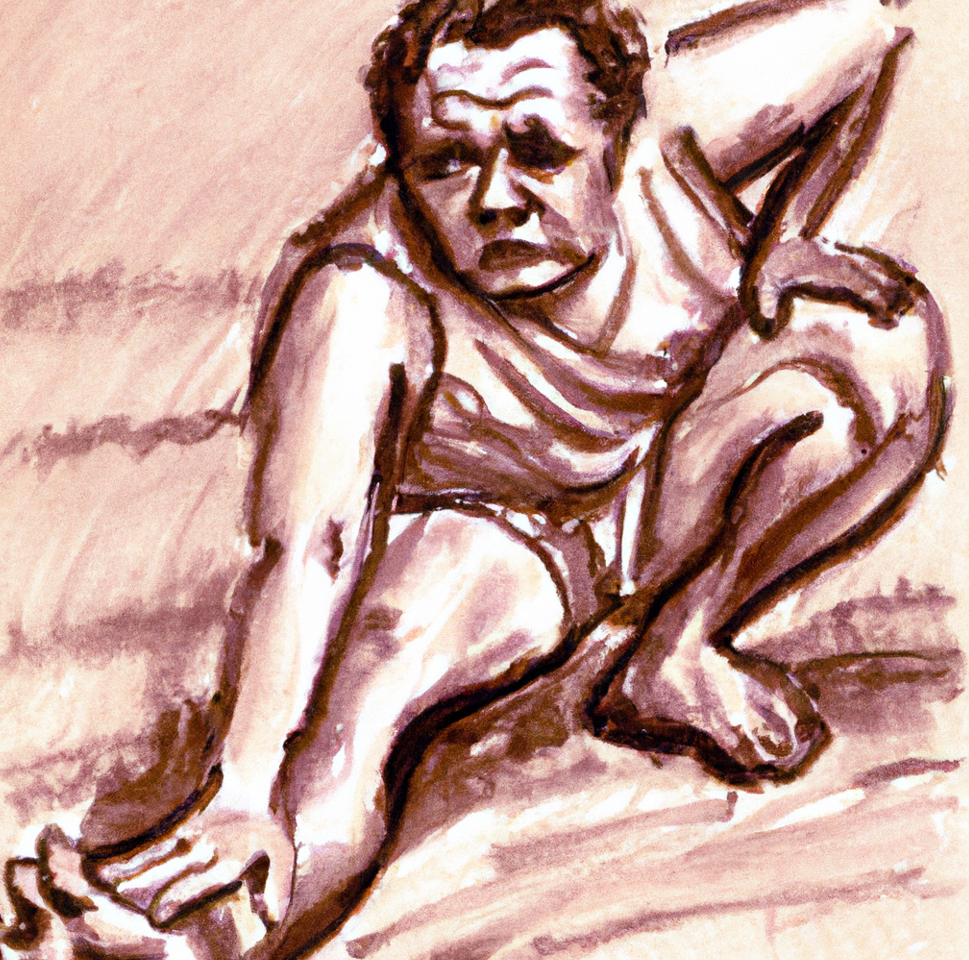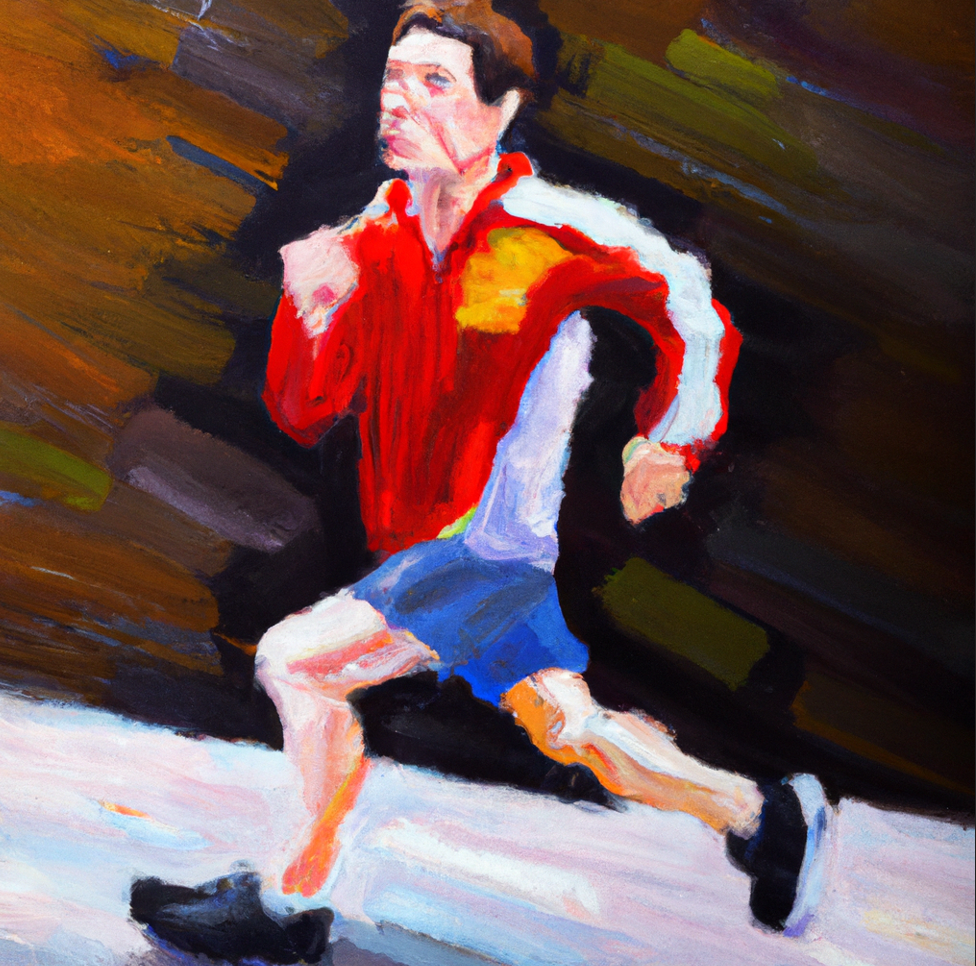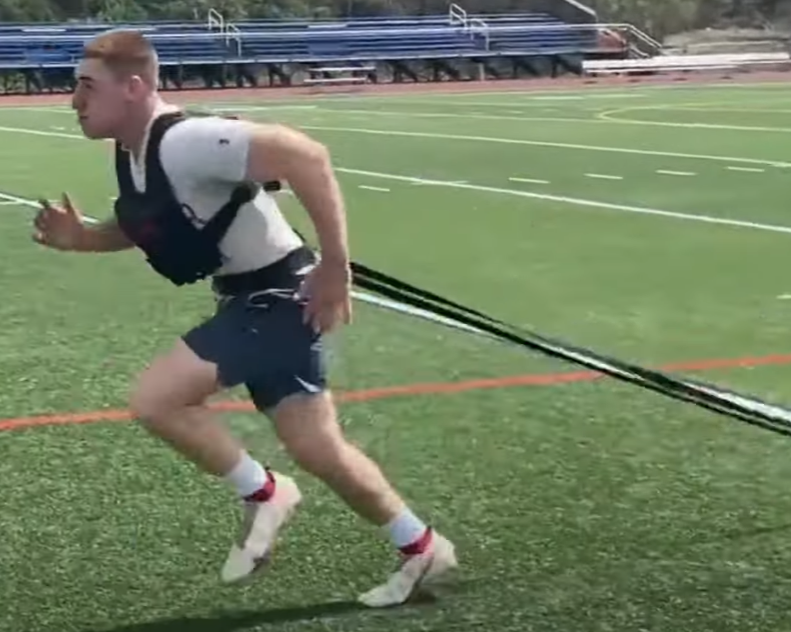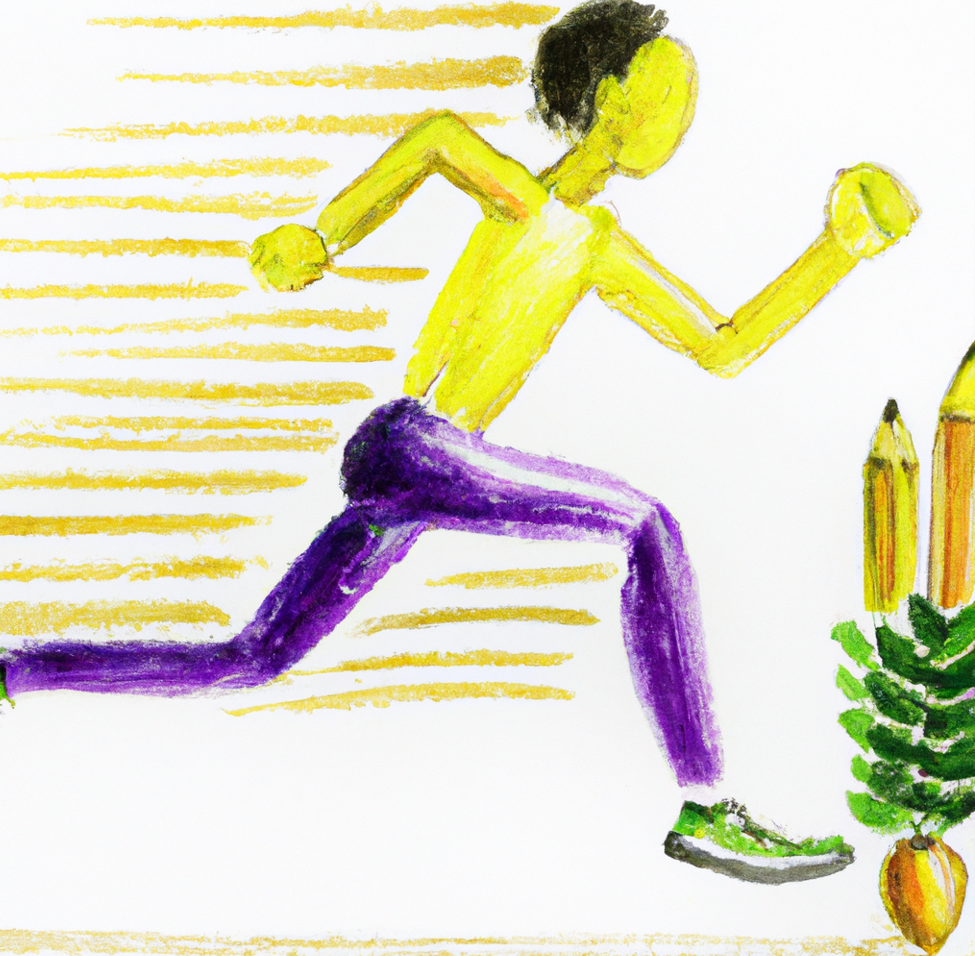This article provides tips on how to run faster. Improving your running form and building strength and endurance can gradually increase your speed. The author suggests focusing on proper posture, maintaining a relaxed upper body, and using good foot strikes to improve your form. The author recommends incorporating running drills and plyometrics into one’s routine to build strength and endurance. Additionally, the author suggests running hills and stairs to increase your speed. Finally, the author means increasing your speed gradually through interval training, progression runs, and a treadmill. By following these tips, runners can increase their speed and become faster.
Running faster is something that all of us strive to achieve, no matter our fitness level. Whether a beginner or a seasoned runner, improving your speed is always a goal. But how exactly do you do it? This blog post will explore strategies to help you run faster, including improving your form, following a speed training plan, and more.
 |
Happy Runner Process Faster Longer |
 |
The Running Revolution audiobook |
 |
Runners World Faster 3 Run Week |
 |
How Run Faster Cycle Swim |
 |
Running Faster Goater Julian Paperback |
 |
Runners World Faster 3 Runs Week |
Warm Up to Run Faster
Warming up is essential for any physical activity, including running. Before running, doing a few stretches and exercises is necessary to get your body ready. When you warm up, your body temperature increases, your heart rate goes up, muscles become more pliable, and your breathing and circulation are improved. All of these factors can help you run faster and avoid injury.

Dynamic stretching is the best way to warm up for running. Dynamic stretching helps to increase your range of motion, preparing your body for the run ahead. Also, dynamic stretching includes arm circles, leg swings, and butt kicks. To do arm circles, stand with your arms outstretched at shoulder height, then move them in a circular motion in both directions. For leg swings, stand with one foot on a bench or step and swing the other leg forward and backward. To do butt kicks, jog in place, lifting your heels behind you, so your heel touches your buttocks with each step.
Once you’ve done dynamic stretching, add running drills to warm up even more. Running drills such as high knees, skips, and carioca help to improve your running mechanics and increase your speed. Run in place and lift each knee to hip level to do high knees. Skipping is similar to running but with a higher knee lift and a longer stride. Carioca is a lateral running drill where you move your legs side-to-side.
Warming up is the key to running faster and preventing injury. Before running, do some dynamic stretching and running drills for a few minutes. This will have your body ready to go and your muscles primed for a great run.
Stretching to Run Faster
Are you looking to improve your running performance and take your speed to the next level? Stretching can be a critical factor in helping you to run faster. When you stretch regularly, you can increase your range of motion, improve flexibility, and prevent injuries. You can increase your speed and reach your goals with simple stretching exercises.

When you run, your muscles are in constant motion and can become tight. Stretching helps to loosen those muscles and make them more elastic, allowing your body to move more fluidly. If your muscles are tight and inflexible, you may find that your running form is impaired, making it more difficult to run faster. To reap the maximum benefits, it is essential to do stretches before and after each run.
Dynamic stretching
Dynamic stretching is the practice of stretching your muscles while moving. This type of stretching is best done before a run to warm up your muscles and help you increase your range of motion. Examples of dynamic stretches include high knees, butt-kickers, and side shuffles.
Static stretching
Static stretching is done while the body is stationary and can be done before or after a run. This stretching type targets the muscles used while running, such as the hip flexors, hamstrings, and quads. Examples of static stretches include lunges, standing quad stretches, and toe touches.
Finally, foam rolling can be used to increase flexibility and improve performance. Foam rolling is a self-massage used to loosen tight muscles and improve circulation. It can target specific areas of the body, like the calves and hamstrings, to help them become more flexible and reduce the risk of injury.
You can improve your running performance and reach your speed goals by stretching regularly. Stretching can help you increase your range of motion, improve flexibility, and reduce the risk of injuries. You can become a faster, more efficient runner with simple stretching exercises.
Dynamic Warm Up
Exercising is a critical component of staying healthy and fit. It can be hard work and challenging to stay motivated, but it’s worth it. A dynamic warm-up is an essential part of any exercise routine, and running is no exception. A dynamic warm-up is designed to increase your body temperature, lubricate your joints, and prepare your muscles for the activity. When it comes to running, a dynamic warm-up can help you run faster and farther with less fatigue.
A dynamic warm-up consists of dynamic stretches rather than traditional static stretches. Occupied spaces are more movement oriented, so instead of holding space for some time, like in a fixed period, dynamic stretches involve more action and gradually increasing range of motion. Examples of dynamic stretches include high knees, butt kicks, arm circles, and jumping jacks.
Start slowly
When running, starting with a slow and steady pace is essential. You should gradually increase your speed and range of motion as you go. This will help to get your blood flowing, lubricate your joints, and prepare your muscles to move and contract. As your body temperature rises, your muscles will become more elastic, allowing you to move more freely and helping you to run faster.
It’s also relevant to pay attention to your breathing during your dynamic warm-up. Taking deep breaths and exhaling slowly will help oxygenate your muscles and keep your heart rate steady. This will help to decrease fatigue and improve your overall performance.
A dynamic warm-up is an essential part of any running routine. Not only will it help you to run faster, but it will also reduce fatigue and injury. It’s important to gradually increase your speed and range of motion during the warm-up and to pay attention to your breathing. You’ll be ready to hit the pavement with speed and endurance with the proper dynamic introduction.
Strength Training
Are you looking to improve your running times? If so, strength training may be the answer. Strength training is essential for runners to boost their performance and run faster. Here’s how you can get started.
First, focus on exercises that target your running muscles. Squats, lunges, and calf raises are good exercises to improve your running speed. These exercises will help build strength in your legs, which is essential for running faster. It would be best to do core activities, such as planks and abdominal crunches, to help with your balance and posture.

Next, incorporate high-intensity interval training (HIIT) into your routine. HIIT involves short bursts of activity followed by a period of rest. This type of training will help you build endurance and increase your speed.
Strength training is an effective way to improve your running speed. By focusing on the correct exercises and allowing your body to rest and recover, you’ll be well on your way to running faster than ever.
Core Strength
Developing core strengths is a great place to start. Core strength, also known as abdominal strength, is the foundation of how quickly and efficiently you can move. Strengthening your core can give you the edge you need to run faster, as well as help to improve your overall balance and stability.

A strong core helps improve your running form, which is essential to running faster. When running, your arms, legs, and core work together to create the most efficient movement. Your heart keeps your body in line and provides the strength to drive your legs forward. Increased core strength can help you maintain a good posture, keep your body in alignment while running, and prevents injuries.
There are a variety of core exercises that can help you to improve your running speed. These can include planks, crunches, squats, and lunges. Regular activities will help build the strength and stability needed to run faster. Additionally, adding resistance training to your program can help develop your core muscles and overall strength.
Improving your core strength is an essential part of running faster. It will help to build a foundation of strength and stability that will help you to achieve your running goals. With a consistent core exercise program, you can see the results quickly. Start today and see how stronger core muscles can help you run faster than ever.
Leg Strength
Running faster is an essential skill for athletes, and having strong legs is crucial in increasing speed. Leg strength is critical for running faster as it helps you maintain your pace and build momentum to keep running. So, how can you improve your leg strength to run faster?
Several exercises can help you build more muscular legs to run faster. Squats and lunges can help strengthen the lower body, while calf raises and step-ups are great for the calves and thighs. You can also use wall sits and hip bridges to work on your core and improve your posture. Additionally, running hills can help you build strength in your legs and improve your endurance.

In addition to strength training, you should also focus on stretching and flexibility. Stretching before and after a run can help reduce the risk of injury and improve your range of motion. This, in turn, enables you to move more efficiently and increases your speed.
You should also focus on your diet if you want to run faster. Eating a balanced diet high in protein and fat can help fuel your body and give you the energy you need to run faster. Additionally, staying hydrated is essential for increasing your speed.
Finally, having the right gear can also help you run faster. Invest in running shoes that provide cushioning and support, as well as clothing that is breathable and lightweight.
Following these tips can improve your leg strength and help you run faster. You can achieve your running goals with the right combination of strength training, stretching, diet, and gear.
Cardio Training
Are you looking to improve your running performance and unlock the potential for faster running speed? Cardio training can help you reach the finish line faster. Whether a novice runner or a seasoned athlete, getting the most out of your cardio training can help you run faster and further.
To maximize your cardio performance, it is essential to understand how your body responds to different types of cardio training. Developing a well-rounded program that includes high-intensity and moderate-intensity workouts can help you reach your running goals.

High-intensity training, such as sprints, helps to increase speed and power. This training helps anaerobic endurance and increases your body’s ability to push past its limits. Include a few short sprints in your cardio routine weekly to build up your running speed.
On the other hand, moderate-intensity training helps to build aerobic endurance and helps to improve your overall fitness. Longer, slower runs can help to build up your endurance and help you to last longer during a race. Incorporate a few longer runs into your weekly cardio routine to build your overall endurance.
In addition to high-intensity and moderate-intensity runs, incorporate other cardio into your routine. Cross-training with other activities such as swimming, cycling, or rowing can help to build up your overall fitness and improve your running performance.
Finally, rest is just as important as training. Resting allows your body to recover and helps to prevent injury. Aim to have at least one full rest day per week and get plenty of sleep each night.
By incorporating high-intensity and moderate-intensity runs into your cardio training, cross-training with other activities, and getting plenty of rest, you can maximize your running performance and unlock your potential to run faster.
Interval Training
Interval training is a way to increase your speed over short distances. It’s a high-intensity exercise that involves alternating short bursts of intense activity with rest or light activity. Interval training can help you run faster and be more efficient in your running form.
Interval training may be the perfect solution to improve your running speed and endurance. It can help you develop a better-running form and increase your cardiovascular capacity. Interval training allows you to become a faster, more efficient runner over short distances.
One of the most common methods of interval training is called Fartlek running. Fartlek is a Swedish word that means “speed play.” It involves alternating periods of running faster and slower, as well as varying distances. Fartlek running can help you improve your speed and endurance and develop a better running form.
Another type of interval training is called Hill Sprints. Hill sprints involve running fast up a hill, then walking or jogging back down. Hill sprints are a great way to build strength and power and increase speed and endurance.
Interval training can also be done on a treadmill. With treadmill interval training, you can alternate between running fast and slow on an incline or running fast and slow on a flat surface. This interval training is excellent for increasing your speed and endurance and developing better running form.
Interval training is a way to increase your speed and endurance and improve your running form. MorInterval training may be the perfect solution if you’re looking to become a faster, more efficient runner. Interval training allows you to become a quicker, more efficient runner over short distances.
Long Distance Running
Long-distance running is a great way to stay in shape and challenge yourself. Whether a novice runner or an experienced jogger, learning how to run faster can help you reach your fitness goals. With a few simple tips and a little effort, you can increase your speed and enjoy the feeling of running faster.
Maintaining your form is one of the most important things to remember when trying to run faster. Keep your chest up, your back straight, and your arms bent at a 90-degree angle. You should also keep your eyes forward and focus on the road ahead. This will ensure that you can save a consistent pace and prevent injuries.
Interval running is another great way to increase your speed. This involves alternating between periods of high intensity and low intensity. For example, you can sprint for 30 seconds and then jog for 30 seconds. Doing this will help you build up your endurance and help you run faster.
Strength training can also help you run faster. Incorporating exercises such as squats, lunges, and deadlifts into your workout routine can help you build up your leg muscles, allowing you to push yourself further and run faster.
Finally, you should always warm up and cool down before and after your runs. This will help you prepare your body for the workout and reduce your risk of injury. Warming up with dynamic stretching and cooling down with static stretching can also help you improve your flexibility and minimize damage.
You are following these tips can teach you how to run faster and reach your fitness goals. So what are you waiting for? Get out there and start running!
Nutrition and Running Faster
Proper nutrition is an essential part of any runner’s success. Eating the right foods can help you increase your energy level, improve your performance, and even help you run faster. Here is some advice to help you get the most out of your nutrition plan and run faster.
First, it’s essential to understand that not all food is created equal. Some foods are more beneficial than others when it comes to running faster. For example, complex carbohydrates provide sustained energy. They are helpful for long-term performance, while simple carbohydrates provide a quick energy boost that can be useful for short-term bursts of speed.
Optimize Your Nutrition
To optimize your nutrition for running faster, focus on eating whole grains, fruits, vegetables, lean proteins, and healthy fats. These foods provide essential nutrients, vitamins, and minerals that will help you maintain your energy level and improve your performance. Eating plenty of water and other fluids is also crucial for proper hydration, which is essential for optimal running performance.
It’s also important to note that eating too much or too little can affect your performance. Overeating can lead to weight gain, while eating too little can lead to fatigue and lack of energy. Eating the right amount of food will help you maintain your energy levels and improve your performance.
Finally, timing your nutrition correctly is essential. Overeating before a race or run can lead to stomach discomfort, while eating too little can leave you feeling weak and tired. Aim to eat a few hours before your race or run when your body has had time to digest the food and consume the energy for improved performance.
Following these simple tips, you can optimize your nutrition and use them to help you run faster. With the right combination of foods, hydration, and timing, you can get the most out of your nutrition plan and reach your running goals.
Conclusion
In conclusion, running faster is a skill that can be developed over time through proper technique, strength-building, and practice. It is important to remember that the essential part of running faster is to stay consistent and remember to have fun. You can increase your speed and break through your running goals with constant practice, dedication, and determination.
 |
Happy Runner Process Faster Longer |
 |
The Running Revolution audiobook |
 |
Runners World Faster 3 Run Week |
 |
How Run Faster Cycle Swim |
 |
Running Faster Goater Julian Paperback |
 |
Runners World Faster 3 Runs Week |


